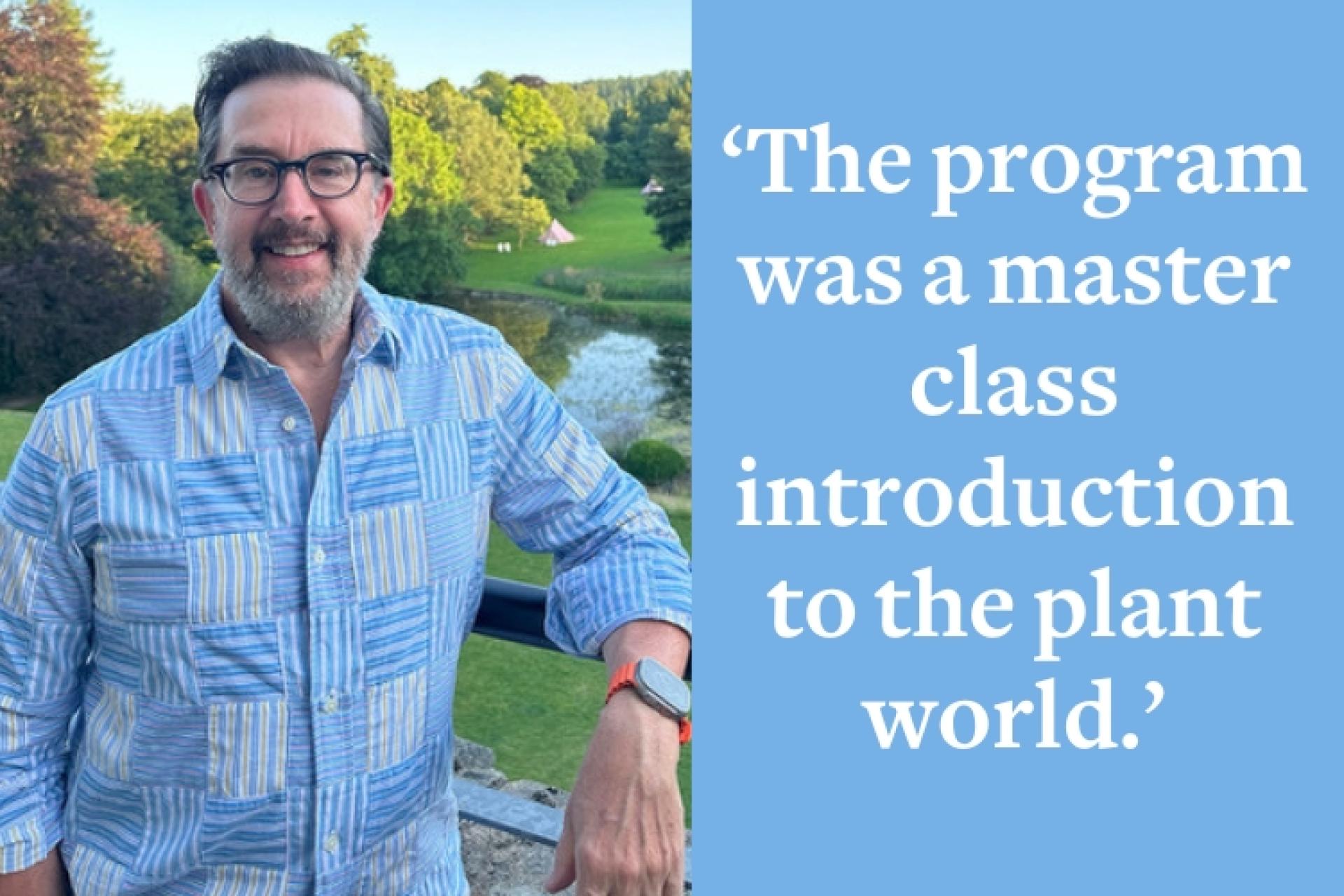You are here
Digging Deep: How a Horticulture Course Helped Me Reconnect with Nature and Find Joy and Meaning in Learning Again
Digging Deep: How a Horticulture Course Helped Me Reconnect with Nature and Find Joy and Meaning in Learning Again
The following was first published in The B magazine.
by James Oates
After more than 40 years in advertising and publishing, I thought my retirement would feel like a reward. Yet I felt something unexpected: restlessness. Those first months without meetings, deadlines, or the familiar rhythm of work left me with something l hadn't experienced in decades: too much free time and not enough purpose. Sure, I could putter around our house in Austerlitz, New York, but my mind was practically shouting for something more meaningful.
Gardening has always been one of my favorite pastimes. Every spring, I could barely contain my excitement as I made my pilgrimage to Ward's Nursery in Great Barrington, loading up the car with every imaginable specimen. My vegetable beds, the perennial gardens around the pool, and even the containers on the deck were a joy to work on as I filled them with colorful annuals.
Yet, as I reflected on all those years, I realized something profound: I'd been gardening without any deep understanding or knowledge of exactly what I was doing. I was like someone who'd been humming along to a favorite song without ever learning the lyrics.
That's what led me to the Berkshire Botanical Garden and their year-long Horticulture Certificate Program. I'll admit, walking into that first class made me nervous. Was I too old to be a student again? Would I be able to keep up? But the chance to finally understand the science behind what l'd been doing by guesswork and luck for so long was too tempting to pass up.
The program was a master class introduction to the plant world. What began as a post-retirement curiosity quickly blossomed into a profound connection with nature. This immersive program doesn't just teach you plant names and techniques, it transforms how you see the natural world. The garden became my classroom, where scientific knowledge and artistic appreciation grew side by side.
I quickly realized this wasn't going to be some casual weekend workshop about which flowers look pretty together. This was serious — a comprehensive deep dive into the world of plants that would challenge everything l thought I knew about gardening.
Take soil science, where I was immediately humbled. All those years, I'd thought of dirt as simply the medium where plants lived, but discovered it was an entire universe teeming with life. Learning about pH levels, nutrient cycles, and soil structure was like being handed a decoder ring for my garden's mysteries.
Plant healthcare was another revelation. The program taught me to think like a plant detective, looking for clues in leaf discoloration, growth patterns, and environmental factors. I learned to identify fungal diseases, understand pest life cycles, and recognize nutrient deficiencies. I began to see my garden not as a collection of individual plants, but rather as an interconnected ecosystem.
Propagation became my new obsession. There's something almost magical about coaxing new life from cuttings, seeds, and divisions. The instructors taught us the science behind rooting hormones, the optimal conditions for germination, and the techniques for successful grafting. I set up a small propagation station in my basement over the winter and began creating new plants from my existing collection.
The sustainability and native plant sections completely upended my approach to gardening. I realized I'd been gardening like some clueless colonizer — imposing my vision on the land instead of working with what naturally wanted to grow there.
Learning about native plants opened my eyes to the beauty and functionality of species that had evolved specifically for our local conditions, such as milkweed, monarda, alliums, and asters. I became mindful of replacing some of my high-maintenance perennials with native alternatives that required less water, no fertilizers, and actually supported local wildlife.
Garden design was perhaps the most transformative part of the whole program. I'd always planted things based on "this looks nice next to that," but I learned there's actually science behind creating beautiful, functional, outdoor spaces. Color theory, seasonal interest, focal points, sight lines — it was like learning the basic grammar of garden design.
By the end of that year, I wasn't the same gardener who started the program. What's more, I realize that retirement doesn't mean stepping away from growth and learning — it gave me the freedom to pursue knowledge. The horticulture program didn't just teach me about plants; it reminded me that curiosity and the desire to learn don't have an expiration date.
Help Our Garden Grow!
Your donation helps us to educate and inspire visitors of all ages on the art and science of gardening and the preservation of our environment.
All donations are 100 percent tax deductible.




